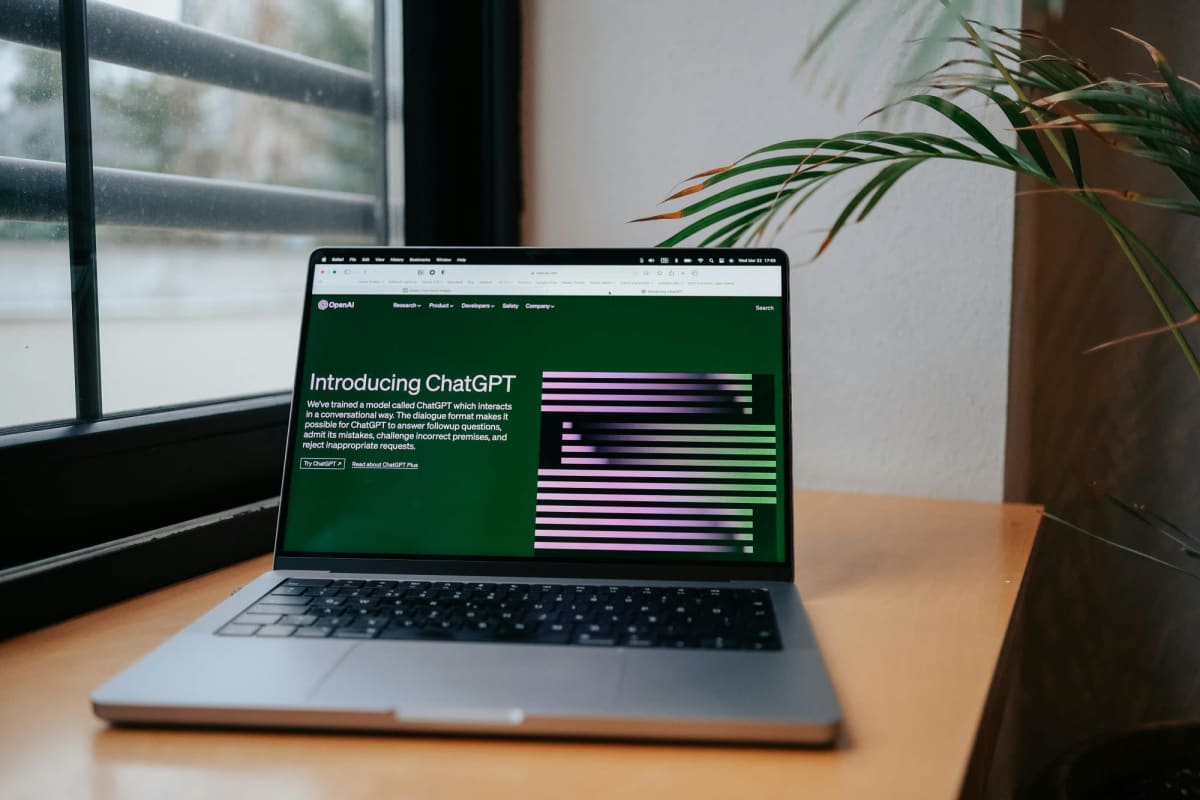Earn
What is freelancing and how to get started
Many people who work freelance as a full time gig are earning a steady and respectable amount of income – proof that full-time employment isn’t the only means to attain financial independence.
What is freelancing and how to get started
Many people who work freelance as a full time gig are earning a steady and respectable amount of income – proof that full-time employment isn’t the only means to attain financial independence.

If you’ve ever thought about pursuing your passion outside of full-time employment and working on your own time, you may wish to consider working as a freelancer.
Here’s what you need to know about freelance work and how you can get started.
What is Freelancing?
Freelancing is a type of self-employment wherein an individual is employed and compensated by a client for certain services without establishing an employee-employer relationship.
Freelancers offer their services to one or more clients as an independent contractor on a part-time, project, long-term or continuous arrangement.

Some also freelance on a full-time capacity or start a freelancing business to replace their full-time employment.
Is Freelancing Popular in Australia?
According to the Australian Bureau of Statistics and marketing research firm Edeleman Berland, 4.1 million Aussies freelanced in 2015 – a two per cent increase from 2014 figures.
Bankwest Curtin Economics Centre reported in April 2018 that about 11.6 per cent of the Australian workforce – approximately 1.27 million Australians – can be classified as full-time independent contractors and/or freelancers.
The centre also revealed that the most popular freelancing services originating in Australia from 2016 to 2018 are:
- Software development
- Creative and multimedia
- Clerical and data entry
- Sales and marketing
- Writing and translating
- Professional services
Advances in technology is instrumental in this growth since it’s much easier to engage clients in other parts of the globe with less time and resources – and most freelancers believe it will only get better.
What do I need to Start a Freelancing Gig?
If you want to try your hand at freelancing work, you need to be prepared to accomplish other administrative and technical work that you don’t normally do when employed in a company.
- Ask
Ask yourself why you want to freelance and what products and/or services you will offer – figure out what your goals are. Try to determine why you want to start freelancing, how you plan to go about it and how much you expect to earn, especially when you have a full-time employment.
Do you plan to quit your job right away? If so, do you have an alternative source of income or enough savings to afford a decent lifestyle? Not all freelance opportunities take off quickly and some projects may take a long time to complete. You may end up getting into debt just to get by or you may find yourself disinterested after a few months of low to zero income.
Take time to learn more about freelancing to determine whether this business model is right for you. You may also ask other freelancers about their experiences when they started out. - Prepare
You need to hone your skills, invest in the right equipment and learn the ropes before diving in.
If the work you plan to do is related to your interest or expertise, chances are that you already have some, if not all, the equipment you need. You may also have the right skills to get started immediately. However, you need to make sure that you know the nitty-gritty details that can make or break your business.
For starters, make sure you’ve done due diligence on the different freelancing platforms, especially if you only plan on getting clients through it and working from home. These platforms may be free to sign up for, but they earn a commission from the amount you are paid with each project you accept. You may be forced to increase your rate so that you’re left with enough income, but a higher rate may mean fewer clients. - Find work
You will have to search for available freelance work and potential clients in job listings, freelance marketplaces and social media, among other platforms. There are a lot of opportunities available in freelance platforms, so it’s up to you to determine which job suits your skill set best. Consider creating an online portfolio of your work so that clients have an idea of how skilled you are. For instance, freelance writers should have a collection of published content, while designers can showcase their different designs.
Explore different freelance platforms to see which one gives better opportunities and leaves more money in your pocket. - Learn to negotiate
You might want to prepare yourself by sharpening your negotiation skills as you’ll sometimes have to negotiate the terms of your project contract and your rate for the work required. Some clients may request a discount, so it’s up to you to decide whether this is something you’ll consider.
You may also negotiate the required output based on the project’s time frame and the rate you agreed on. - Address all aspects of the “business”
Being a freelancer or running a freelance business means that you have to take care of your own taxes and retirement fund. You will have to take up all the roles that are typically divided in a company, such as human resources, sales, marketing, accounting and product development, among other things.
To be a freelancer means you have to address the following:
- Finding your own clients
- Managing multiple clients and projects
- Marketing and selling your own skills and products
- Paying your own benefits and employment taxes
- Resolving any conflict that arises with suppliers and/or clients
Pros and Cons of Being a Freelancer
Now that you have an idea of what you need to prepare for a freelance gig, consider the various benefits and obstacles you may face when freelancing.
Pros
- Work whenever, wherever, however
You can choose your work hours depending on how you want to go about with your freelance work. If you want to keep your job in a company, you may simply do freelance work outside of work hours and during weekends in your gym clothes. You can also work anywhere you want as long as you have all the equipment you need.
Likewise, it’s completely up to you how you wish to complete your tasks – staggered or in one go – as long as you’re able to provide what the client asked for. - Choose your own clients
You have the opportunity to accept and decline potential clients. This means you have the chance to play to your strengths and accept only clients that require services you’re good at.
Likewise, you have the power to turn down clients you aren’t compatible with. - Be your own boss
You don’t have to answer to anyone else other than yourself and your clients. - Keep all your profits
You get to keep all your earnings minus tax when you make a profit from the products and services you offer. - No more daily commutes and traffic jams
You can work in your PJs in your kitchen while making breakfast, at a cafe down the street or wherever your mood takes you. There’s no longer any need to endure daily commutes and soul-sucking traffic jams if the project doesn’t call for long travels. - Better work-life balance
You get to decide when to pause your work to attend to other personal matters and, since you manage all aspects of each project, you know everything that needs to be done and you can scale the work appropriately.
Cons
- Susceptibility to distractions
Since you can work anytime, anywhere and however you choose, you may end up opening yourself to distractions. For instance, you may work at home for the whole day, but you end up seeing all the mess that has to be tidied up before getting to work. Before you know it, it’s already dinner time and you have yet to accomplish any work. - Managing work-life balance
Things may start out slow as a freelancer so you may end up accepting any or all clients who show an interest in your work. While this may be good for your pockets, you may end up working most of the time. - Manage your taxes, benefits and insurance
Unlike working in a company where you receive certain benefits and an employer-sponsored super, you have to pay for all your benefits yourself. Likewise, you have to keep track of all your income, expenses and other assets because you will have to do your own taxes. - Clients may have different schedules or time zones
You may work with clients from other countries in different time zones. As such, you’ll have to adjust to their time zone for meetings or to answer any concerns they might have – even if it’s 3am for you! - Work demand isn’t always consistent
Your work ends once your product or service for a particular project is complete. This is usually the case if you’re offering specific products or services that ends upon completion, such as creating web designs or logos and templates.
Then you’ll have to find another client who is interested to work with you, but this may take time, depending on how high the demand is specifically for your service.
Freelancing Isn’t for Everyone
Freelance work may offer a certain degree of freedom both professionally and financially, but this path isn’t for everyone.
If you want to try your hand at freelancing, most experienced freelancers suggest doing it as a side job first to get a feel for the environment you’ll be working in. Likewise, many recommend ensuring that you have enough savings to last for a few months if you want to terminate your full-time employment in favour of freelancing.
About the author

About the author


Digital marketing
Influencer discussions on AI bubble surge 200% on X as concerns grow over massive investments
In a dramatic shift in online discourse, discussions surrounding the so-called "AI bubble" have surged by nearly 200% on the social media platform X during October 2025, according to GlobalData, a ...Read more

Digital marketing
Nvidia's $100 billion investment in OpenAI poised to transform AI landscape
A monumental partnership between OpenAI and Nvidia has become the focal point of discussions among technology influencers, with the latter committing up to $100 billion in a strategic collaborationRead more
Digital marketing
Facebook reaches deal with government, vows to restore news
Facebook intends to restore Australian news pages in the coming days, Treasurer Josh Frydenberg confirmed on Tuesday. Read more

Digital marketing
Facebook blocks access to health and emergency services
UPDATE: Facebook has confirmed for nestegg that while government pages "should not" be impacted, it has taken a broad definition of news content "in order to respect the law as drafted". Read more
Digital marketing
Facebook bans news sharing and viewing in Australia
Aussies will no longer be able to share or view local or international news content on Facebook, with the social media giant announcing late on Wednesday that it will restrict “publishers and people ...Read more

Digital marketing
Google’s threat to wave goodbye heats up calls for regulation
With the war between Google and Australia now in danger of seeing the search engine giant depart our shores, not everyone is certain the government should back down, with one expert urging it to stand ...Read more

Digital marketing
Consumers force brands to align with social causes
With consumers increasingly embracing social causes, their expectations of the products and brands they buy have altered significantly over the past few years. Read more

Digital marketing
Government called to toughen rules for big tech amid free speech debate
Australia is being urged to implement rules that require social media platforms to be transparent when closing someone’s account and offer a way for them to appeal it. However, politicians are being ...Read more

Digital marketing
Influencer discussions on AI bubble surge 200% on X as concerns grow over massive investments
In a dramatic shift in online discourse, discussions surrounding the so-called "AI bubble" have surged by nearly 200% on the social media platform X during October 2025, according to GlobalData, a ...Read more

Digital marketing
Nvidia's $100 billion investment in OpenAI poised to transform AI landscape
A monumental partnership between OpenAI and Nvidia has become the focal point of discussions among technology influencers, with the latter committing up to $100 billion in a strategic collaborationRead more
Digital marketing
Facebook reaches deal with government, vows to restore news
Facebook intends to restore Australian news pages in the coming days, Treasurer Josh Frydenberg confirmed on Tuesday. Read more

Digital marketing
Facebook blocks access to health and emergency services
UPDATE: Facebook has confirmed for nestegg that while government pages "should not" be impacted, it has taken a broad definition of news content "in order to respect the law as drafted". Read more
Digital marketing
Facebook bans news sharing and viewing in Australia
Aussies will no longer be able to share or view local or international news content on Facebook, with the social media giant announcing late on Wednesday that it will restrict “publishers and people ...Read more

Digital marketing
Google’s threat to wave goodbye heats up calls for regulation
With the war between Google and Australia now in danger of seeing the search engine giant depart our shores, not everyone is certain the government should back down, with one expert urging it to stand ...Read more

Digital marketing
Consumers force brands to align with social causes
With consumers increasingly embracing social causes, their expectations of the products and brands they buy have altered significantly over the past few years. Read more

Digital marketing
Government called to toughen rules for big tech amid free speech debate
Australia is being urged to implement rules that require social media platforms to be transparent when closing someone’s account and offer a way for them to appeal it. However, politicians are being ...Read more








